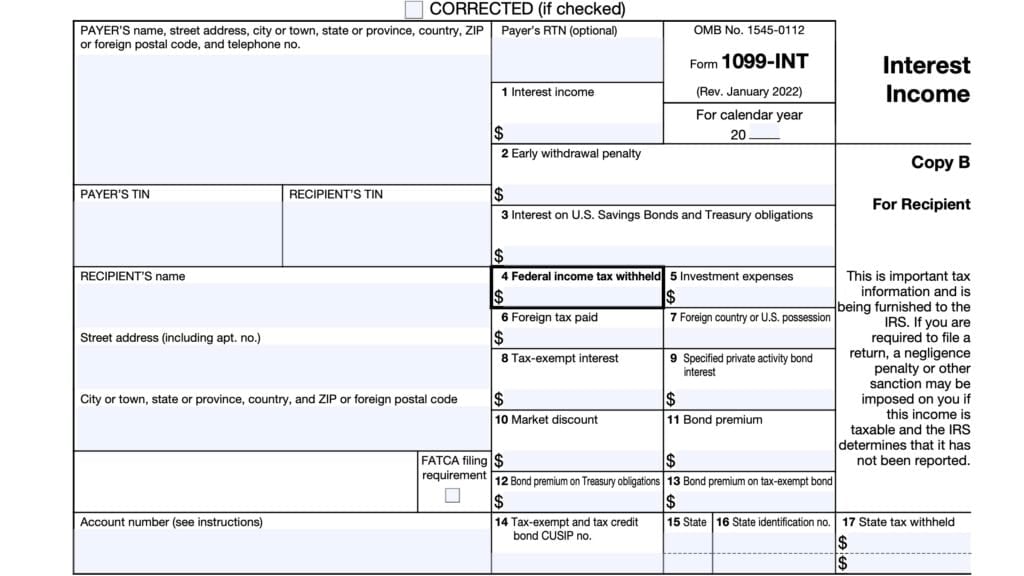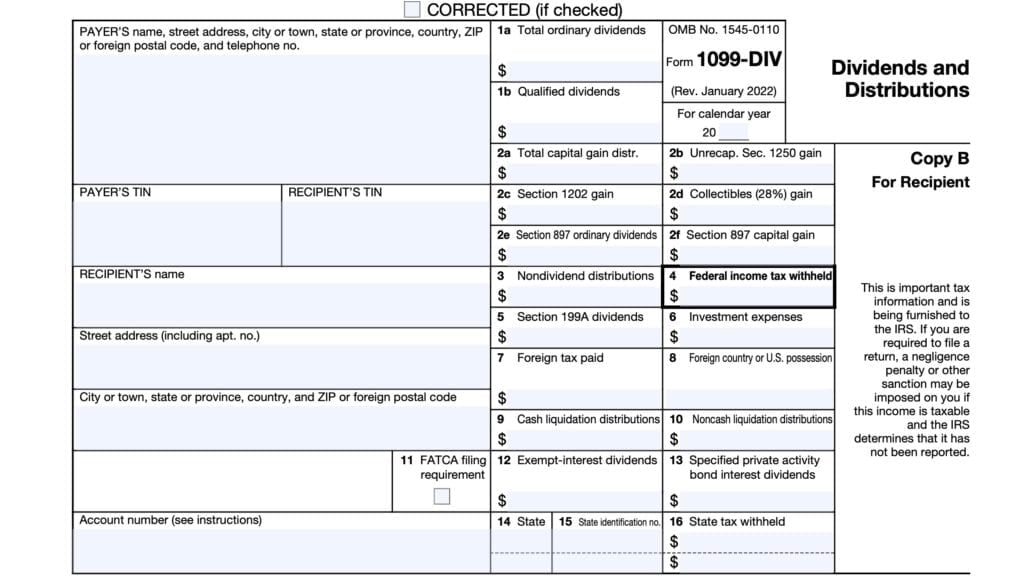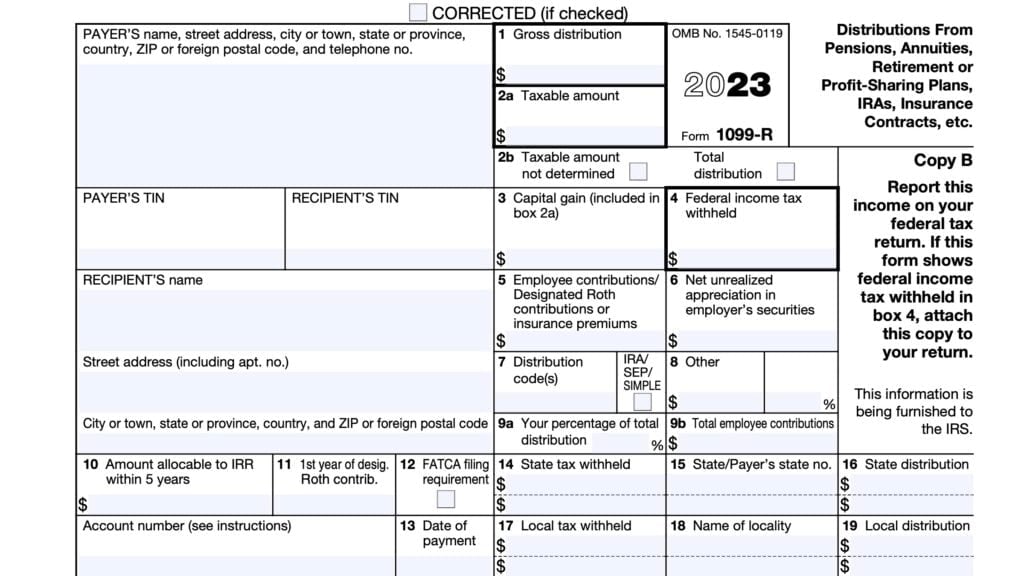IRS Form 1099-NEC Instructions
Many businesses have started reducing business expenses by limiting the number of employees they report wages for on IRS Form W-2. Instead, businesses are increasingly treating more and more workers as self-employed individuals who receive IRS Form 1099-NEC, instead.
In this article, we’ll walk you through everything you need to know about IRS Form 1099-NEC, including:
- How to understand the information reported on your IRS Form 1099-NEC
- How to report this tax information on your income tax return
- Other frequently asked questions
Let’s start at the top of this tax form and go through it, step by step.
Table of contents
IRS Form 1099-NEC Instructions
In most of our articles, we walk you through how to complete the tax form. However, since Form-1099 is issued to taxpayers for informational purposes, most readers will probably want to understand the information reported on their 1099-NEC form, instead of how to complete it.
Before we start breaking down this tax form, it’s important to understand that there can be up to 4 copies of Forms 1099-NEC. Here is a break down of where all these forms end up:
- Copy A: Internal Revenue Service center
- Copy B: For recipient’s tax records
- Copy 1: For state, city, or local tax department
- Copy 2: To be filed with employee’s state, city, or local tax return
For employees who do not pay state, city, or local income taxes, copies 1 and 2 are optional.
Let’s get into the form itself, starting with the information fields on the left side of the form.
Taxpayer identification fields
We’ve broken down the left-hand side of IRS Form 1099-NEC so you can verify your information for accuracy.
Payer’s Name, Address, And Telephone Number
You should see the payer’s complete business name, address, and telephone number in this field.
Payer’s TIN
This is the payer’s taxpayer identification number (TIN). In most situations, this will be the employer identification number (EIN).
The payer’s TIN should never be truncated.
Recipient’s TIN
As the recipient or payee, you should see your taxpayer identification number in this field. For payees, the TIN can be any of the following:
- Social Security number (SSN)
- Individual taxpayer identification number (ITIN)
- Adoption taxpayer identification number (ATIN)
- Employer identification number (EIN)
Please review this field to make sure that it is correct. However, you may see a truncated form of your TIN (such as the last four digits of your SSN), for privacy protection purposes. Copy A, which is sent to the Internal Revenue Service, is never truncated.
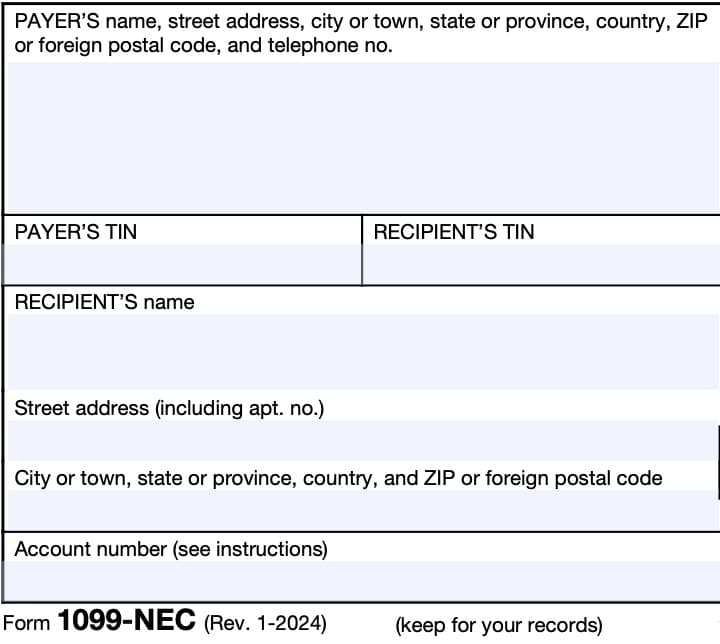
Recipient’s Name And Address
You should see your legal name and address reflected in these fields. If your address is incorrect, you should notify the financial institution and the IRS.
You can notify the IRS of your new address by filing IRS Form 8822, Change of Address. Business owners can notify the IRS of a change in their business address by filing IRS Form 8822-B, Change of Address or Responsible Party, Business.
Account number
This field is present in many information returns, such as IRS Form 1099-INT or IRS Form 1099-MISC. Your payer may use service providers, such as accounting services, to issue nonemployee compensation payments.
As a result, you may see an account number established for these payment amounts. If the field is blank, you may ignore it.
Boxes 1 through 4
On the right-hand side of the form are Boxes 1 through 4, as well as state tax information in Boxes 5 through 7. In most circumstances, some of these boxes will be blank.
However, let’s go through each box so we can better understand what you should expect to see, and where you should report it on your federal income tax return.
Box 1: Nonemployee compensation
Box 1 shows the total amount of non-employee compensation that the payer reported paying you in the calendar year.
If the amount in this box is self-employment income, report the total amount of payments on one of the following forms, based upon your business structure:
- Sole proprietorship: Report nonemployee compensation payments on IRS Schedule C of your Form 1040
- Partnership: Report amount of payment on Schedule K-1 (IRS Form 1065)
You will also report this compensation on Schedule SE, as self-employment income, whether you’re a sole proprietor or a business partner.
Self-employed individuals may need to make estimated tax payments throughout the tax year to avoid underwithholding penalties. This includes federal income tax, as well as Social Security taxes and Medicare taxes.
Examples of nonemployee compensation
According to the IRS instructions, below are examples of nonemployee compensation that might warrant IRS Form 1099-NEC:
- Professional service fees
- Can include fees to licensed professionals, such as attorneys, accountants, architects, contractors, or engineers
- Fees paid by one professional to another, such as fee-splitting or referral fees
- Payments by attorneys to witnesses or experts in legal adjudication.
- Payment for services
- Can include payment for parts or materials used to perform the services if supplying the parts or materials was incidental to providing the service
- Commissions paid to nonemployee salespersons that are subject to repayment but not repaid during the calendar year
- A fee paid to a nonemployee, including an independent contractor, or travel reimbursement for which the nonemployee did not account to the payer, if the fee and reimbursement total at least $600
- Payments to nonemployee entertainers for services
- Use Form 1042-S, Foreign Person’s U.S. Source Income Subject to Withholding, for payments to nonresident aliens
- Exchanges of services between individuals in the course of their trades or businesses.
- Taxable fringe benefits for nonemployees.
- Gross oil and gas payments for a working interest
- Payments to an insurance salesperson who is not a common law or statutory employee
- Directors’ fees
- Commissions paid to licensed lottery ticket sales agents
- Payments to Section 530 (of the Revenue Act of 1978) workers
Examples not considered nonemployee compensation
Conversely, the IRS instructions state that the following payments are not considered non-employee compensation. So you shouldn’t see these payments on your Form 1099-NEC:
Payments not reported in box 1. Do not report in box 1:
- Expense reimbursements paid to volunteers of nonprofit organizations
- Deceased employee wages paid in the year after death
- This should be reported in Box 3 of IRS Form 1099-MISC, instead
- Rent payments (reported on IRS Form 1099-MISC, Box 1)
- Royalties (reported on IRS Form 1099-MISC, Box 2)
- Other income not subject to self-employment tax (reported on IRS Form 1099-MISC, Box 3)
- Interest payments (reported on IRS Form 1099-INT)
- The cost of current life insurance protection
- Reported on IRS Form W-2 or IRS Form 1099-R)
- An employee’s wages, travel or auto allowance, or bonuses and prizes
- Reported on IRS Form W-2), and
- The cost of group-term life insurance paid on behalf of a former employee
- reported on Form W-2)
Box 2
If this box is checked, then the payer is reporting that they made direct sales of at least $5,000 of consumer products to you for resale. This form could report sales made on a buy-sell, deposit-commission basis, or other basis.
As a general rule, independent contractors should report the gross proceeds, as well as the cost of these products on Schedule C of your tax return.
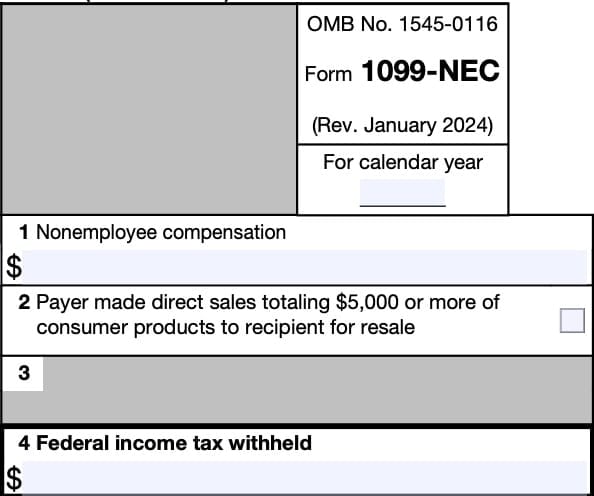
Box 3: Reserved for future use
This box is reserved for future use.
Box 4: Federal Income Tax Withheld
You should see backup withholding amounts reported in Box 4. If you have not given your TIN to the financial institution, you may be subject to backup withholding rules on payments made on IRS Form 1099-NEC.
In this case, you may be asked to complete IRS Form W-9, Request for Taxpayer Identification Number and Certification. This will allow the payer to report the correct TIN to the Internal Revenue Service.
Foreign recipients may be asked to complete IRS Form W-8 instead.
State tax information
These fields contain additional information for taxpayers who need to file state income tax returns.
Box 5: State tax withheld
If you live in a state without income tax, you may not see any information in Boxes 5 through 7. However, Boxes 5 through 7 may contain relevant tax information for up to 2 different states.
If applicable, Box 5 will contain the the amount of state income tax withheld from your income.

Box 6: State Identification Number
If your financial institution has a specific state tax identification number, that TIN will appear in Box 6.
Box 7: State income
Box 7 contains the state taxable income for any state income tax withheld in Box 5.
Filing IRS Form 1099-NEC
For tax entities who must file this tax form with the Internal Revenue Service, the IRS requires certain paper versions of information returns to be accompanied by IRS Form 1096, Annual Summary and Transmittal of U.S. Information Returns.
Check out our step-by step instructional guide for more information on how to submit your information return with IRS Form 1096.
Video walkthrough
Watch this instructional video to learn more about understanding your tax information as reported on IRS Form 1099-NEC.
Do you use TurboTax?
If you don’t, is it because the choices are overwhelming to you?
If so, you should check out our TurboTax review page, where we discuss each TurboTax software product in depth. That way, you can make an informed decision on which TurboTax offering is the best one for you!
Click here to learn more about which TurboTax option is best for you!
Frequently asked questions
Below are some of the most common questions about IRS Form 1099-NEC.
Payers must use IRS Form 1099-NEC to report payments to anyone whom they paid $600 or more in nonemployee compensation, sold at least $5,000 of consumer products for resale, or withheld federal income tax under backup withholding rules, regardless of the amount of federal income tax withheld.
The filing deadline for IRS Form 1099-NEC is January 31st of the following year for the tax year in question. For example, the 2024 1099-NEC form is due to nonemployees by January 31, 2025.
For recipients, the primary difference is that Form W-2 reports income you earned as an employee, while Form 1099-NEC reports income you earned as a nonemployee. As a result, you may be subject to additional self-employment taxes as a nonemployee.
Where can I find IRS Form 1099-NEC?
As with other IRS forms, you can find IRS Form 1099-NEC on the IRS website. For your convenience, we’ve enclosed the latest version of the tax form in this article.
Related tax articles
This tax form is one of the fillable tax forms provided by the Internal Revenue Service, to help taxpayers reduce their tax preparation costs. To see more forms like this, visit our free fillable tax forms page, where you’ll also find articles like this.
Unlike the IRS, our articles contain step by step instructions for each tax form, as well as video walkthroughs. You can also check out all of our videos by subscribing to our YouTube channel!
